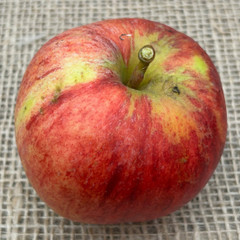Description
Raised in the late 1700s by Richard DuMellor, farmer of Shackerstone near Ashby-de-la Zouche, this became one of the premier Victorian cooking varieties long before Bramley's Seedling came to prominence. Cooks to a sharp, strongly flavoured pale cream puree. Its creamy texture, and 'brisk' flavour make it far superior to Bramley, both for mincemeat, and as one of the best baking apples of all. Attractive blossom and greater frost resistance to frost than Bramley.
"This old apple was first raised, probably from a pip of Northern Greening, in the late 1700s at Shackerstone, Ashby-de-la-Zouche, in Leicestershire (near incidentally Appleby Magna and Appleby Parva).The farmer was Richard Dummeller or Dummellor (sounds like Dumelow), and it is sometimes now listed as Dummellor's Seedling. Since apple names have hitherto been unmolested by nomenclatural correctness, we can expect it to retain the name known and well-loved for two-hundred years. It had a brief moment of glory as 'Wellington' around 1819-20, (probably for the Iron Duke, who was heaped with honours in the wake of the Peninsula Wars).
It was listed by Backhouses as a good market variety, and before the rise of Bramley's Seedling, was a primary commercial apple. It can be used in preference — wherever Bramleys would be recommended for culinary purposes. A large apple with strong, sharp flavour, retained to the end, it cooks down to a creamy white purée, most excellent when spooned from the shell if baked. It has very attractive blossom and greater frost resistance than 'Bramley's Seedling'." © Lin Hawthorne - 'The Northern Pomona'.
For help with choosing the correct rootstock for your needs, please click here A Guide to Rootstocks
For help with choosing the correct size and shape, please click here A Guide to Fruit Tree Shapes









